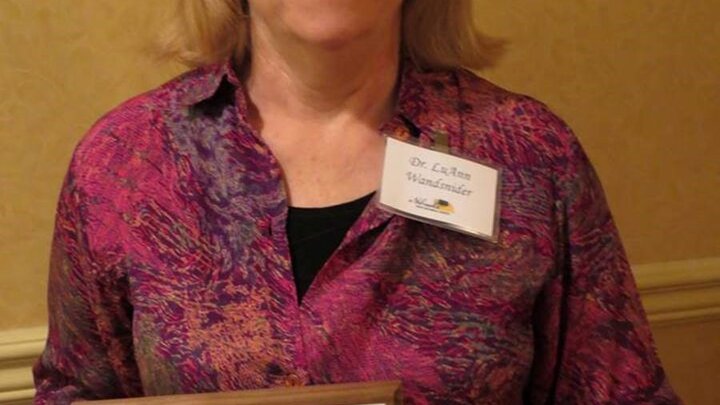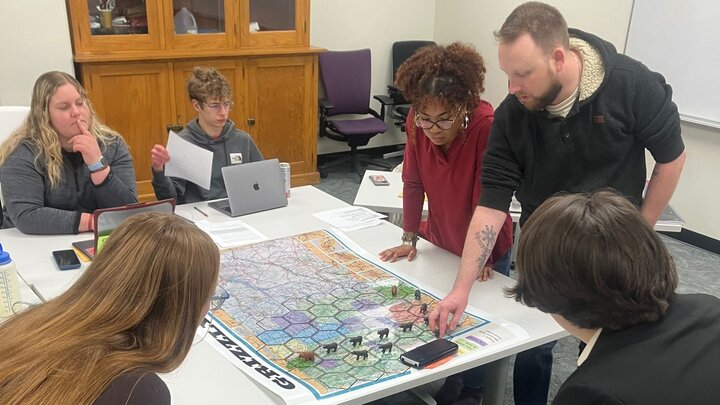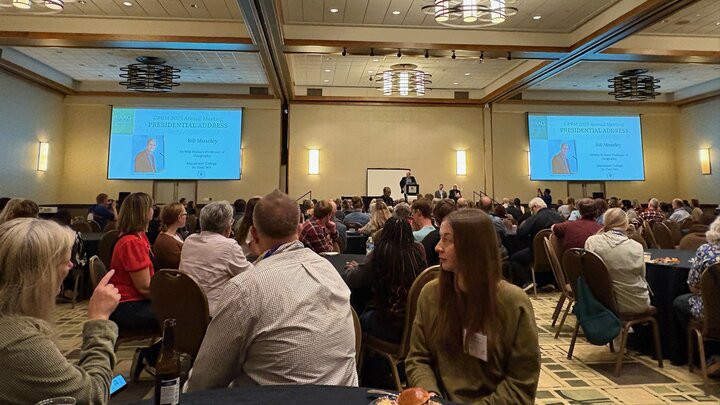Professor LuAnn Wandsnider has been recruited to coordinate the North American effort to understand the role of historical human landscape modification in affecting climate change. Current climate models do not accurately account for humans’ role in changing the environment. Hence, LandCover 6K, a team of international researchers led by Dr. Marie-José Guillard (Linnaeus University, Sweden) and by Dr. Kathleen Morrison (University of Chicago), is embarking upon a project to help climate scientists better document land cover and use over the past 10,000 years. LandCover 6k is a working group of PAGES (Past Global Changes). Founded in 1991, PAGES is a core project of the International Geosphere-Biosphere Programme (IGBP) and is funded by the U.S. and Swiss National Science Foundations, and the National Oceanic and Atmospheric Administration (NOAA).
Current anthropogenic land cover change (ALCC) models are problematic. As Morrison notes, “The models are over-simplified. They are based on mathematical equations relating how many people were in a particular area and what the modelers think X number of people did to transform vegetation. But, they don’t integrate evidence we have from the fields of history, archaeology and historical geography about how people organized agriculture—differences such as dry versus wet crops, like rice paddies—that show the same number of people, acting quite differently, can have a very different impact on the landscape.” The aim of LandCover 6k is to address these inadequacies by tracking land cover and land use changes over the last 6 thousand years (6k) and beyond.
“This is an exciting effort to harness the rich archaeological and paleoenviornmental record we have for the Great Plains in particular and North American in general to address the defining issue of our generation, understanding and engaging with climate change,” says Wandsnider. “It’s a myth, for example, that Native Americans had no impact on the Great Plains landscape. We know that ancestors of Pawnee and other Great Plains peoples relied on fire to improve grazing conditions, to ‘call the bison.’ One thousand years ago, people were growing maize and native cultigens on floodplains throughout the Central Plains. Even these seemingly low impact activities had cascade effects, creating new habitat for other species and with necessary, modest, and possibly stabilizing, effects on global climate. With European colonization, the conversion of the upland prairie to a more homogenous agrolandscape had other effects. Let’s use this information to improve our understanding of climate change.”
The five-year project has two tracks running simultaneously. One group is looking at land cover changes across the globe, using pollen analysis as a way of reconstructing the past vegetation to see how forest cover, crops and plants have changed over the entire Holocene, our current geological epoch. The other group, to which Wandsnider will contribute, is looking at land use data, or how people have used the land. The researchers in LandCover 6k will rely on evidence from archaeology, history and historical geography—social science disciplines that are not often included in climate scientists’ models and predictions.
“Our first (monumental) goal is to develop a land use classification system that can be used for the whole world for the last 10,000 years. Once our classification system is up and running, we’ll begin to make maps showing land use through time,” reports Wandsnider. Eventually, there will be interactive maps available to the public to better explore the relationships between land cover and land use, and their effects on the climate.
Wandsnider is an archaeologist who has worked on Great Plains pre-Columbian and historical adaptations as well as the human use of the landscape in southern Turkey during early Roman times. Currently, she is part of a UNL-based team analyzing a sodhouse wall from Custer County, to understand the historic prairie of 1900. With another group of researchers, she is focusing on the Sand Hills and how ancestral Pawnees and others adapted to dramatic climate changes and cycles of dune mobilization and stabilization over the last 1000 to 500 years, associated with the so-called Medieval Climatic Anomaly.
Wandsnider and the international researchers will convene this fall at the University of Chicago Center in Paris to work on the land use classification system.




